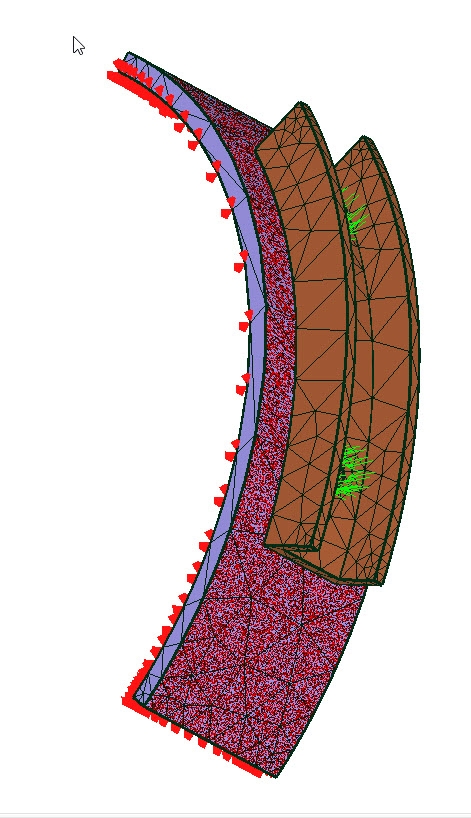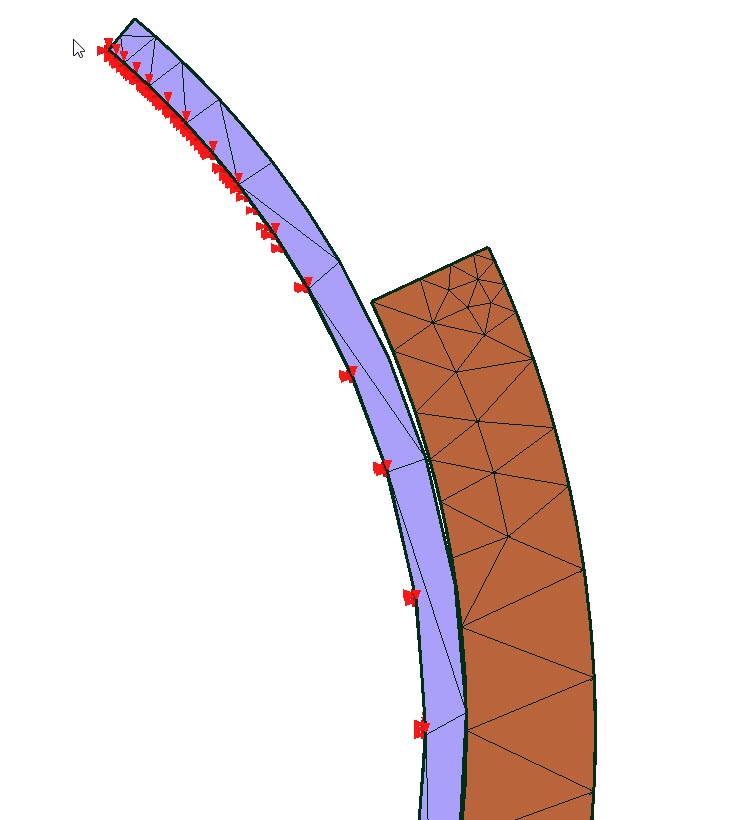Contact failure
I have a model utilizing the non-linear contact of CCX that I created and ran in V20, and it worked just fine. I upgraded to V23 (and hastily removed V20) and created a similar model, but that model does not run. It starts out with exceptionally high forces and displacements and does not converge. The model created in V20 still runs fine in V23. When I recreate the exact same model in V23 however it does not work. There seems to be a problem in creating the contact - the interface is different but I have entered the same data as far as I can tell.
Two questions:
1) Where can I download V20?
2) What might be causing this failure to converge. I have exceptionally high forces and displacements at the start that do not resolve. In V20 the initial forces and displacements are reasonable and it converges quickly.
Here is a bit more info about what I am simulating.

I have a fixed mandrel that a curved bar is being bent around
The contact surfaces are between the two parts. I have modeled this with a much higher element count but show a low count here and attached.
Two questions:
1) Where can I download V20?
2) What might be causing this failure to converge. I have exceptionally high forces and displacements at the start that do not resolve. In V20 the initial forces and displacements are reasonable and it converges quickly.
Here is a bit more info about what I am simulating.

I have a fixed mandrel that a curved bar is being bent around

The contact surfaces are between the two parts. I have modeled this with a much higher element count but show a low count here and attached.
Howdy, Stranger!
It looks like you're new here. If you want to get involved, click one of these buttons!

Comments
However, some concerns:
The bar has no constraints against rigid body motion. That's a common reason for contact failure. I tried constraining it in Y and Z but it ended up with excessive displacement in X.
The applied force is quite high - 18 GPa over 0.0001 m^2 is 2 MN. Is that correct?
Thank you for the link.
1) The bar in the model is already constrained in Z and Y with the nodal constraints shown below.
2) 18GPa is a typo that was not present in my previous more complex simulation attempts. It should be 18MPa, but it fails in either case.
I recreated the model in V20 with 18MPa of pressure and got the same excessive X displacement. Not sure how to proceed. Seems so simple, but something is clearly wrong.
Tim
Strange it worked before.
This is like a press and typically works better solved imposing displacement.
I cheated by putting some "rubber bands" (elastic support) on the nut plate to keep things from flying away in the first steps. This is a good trick so long as you remember to use Solution->Sum to sum forces on Elastic Support Faces to be sure they are negligible.
I recommend you try modeling solid bolts and use the pre-tension section feature, it is easy to use.
run in v22 PASTIX
EDIT- added bolt example
Thank you for the example that was very helpful! I was unaware of the pre-tension feature and the elastic coupling trick will come in handy. Thank you again for your help.
Tim